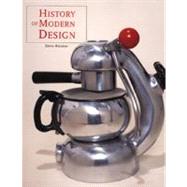
Note: Supplemental materials are not guaranteed with Rental or Used book purchases.
Purchase Benefits
What is included with this book?
| Supply, Demand, and Design, 1700-1850 | |
| Demand and Production | |
| Entrepreneurial Efforts in England and Elsewhere | |
| Growing Pains: Expanding Industry in the Early Nineteenth Century | |
| Design, Society, and Standards | |
| Arts, Crafts, and Machines, 1850-1914 | |
| The Equality of the Arts | |
| The Joy of Work | |
| Mechanization and Industry | |
| After the Great War, 1918-1944: Moderne, Industry, and Utopias | |
| Paris and L'art Moderne Before and After the Great War | |
| The First Machine Age in Europe | |
| Art, Design, and Industry in the United States | |
| Humanism and Luxury: International Modernism and Mass Culture After World War II, 1945-1960 | |
| International Modernism: From Theory to Practice | |
| Design and Mass Appeal: A Culture of Consumption | |
| Progress, Protest, and Pluralism, 1960-2000 | |
| New Materials, New Products | |
| Dimensions of Mass Culture | |
| Politics, Pluralism, and Postmodernism | |
| Design in Context: An Act of Balance Notes: Suggestions for Further Reading | |
| Timeline | |
| Bibliography | |
| Index | |
| Table of Contents provided by Publisher. All Rights Reserved. |
The New copy of this book will include any supplemental materials advertised. Please check the title of the book to determine if it should include any access cards, study guides, lab manuals, CDs, etc.
The Used, Rental and eBook copies of this book are not guaranteed to include any supplemental materials. Typically, only the book itself is included. This is true even if the title states it includes any access cards, study guides, lab manuals, CDs, etc.